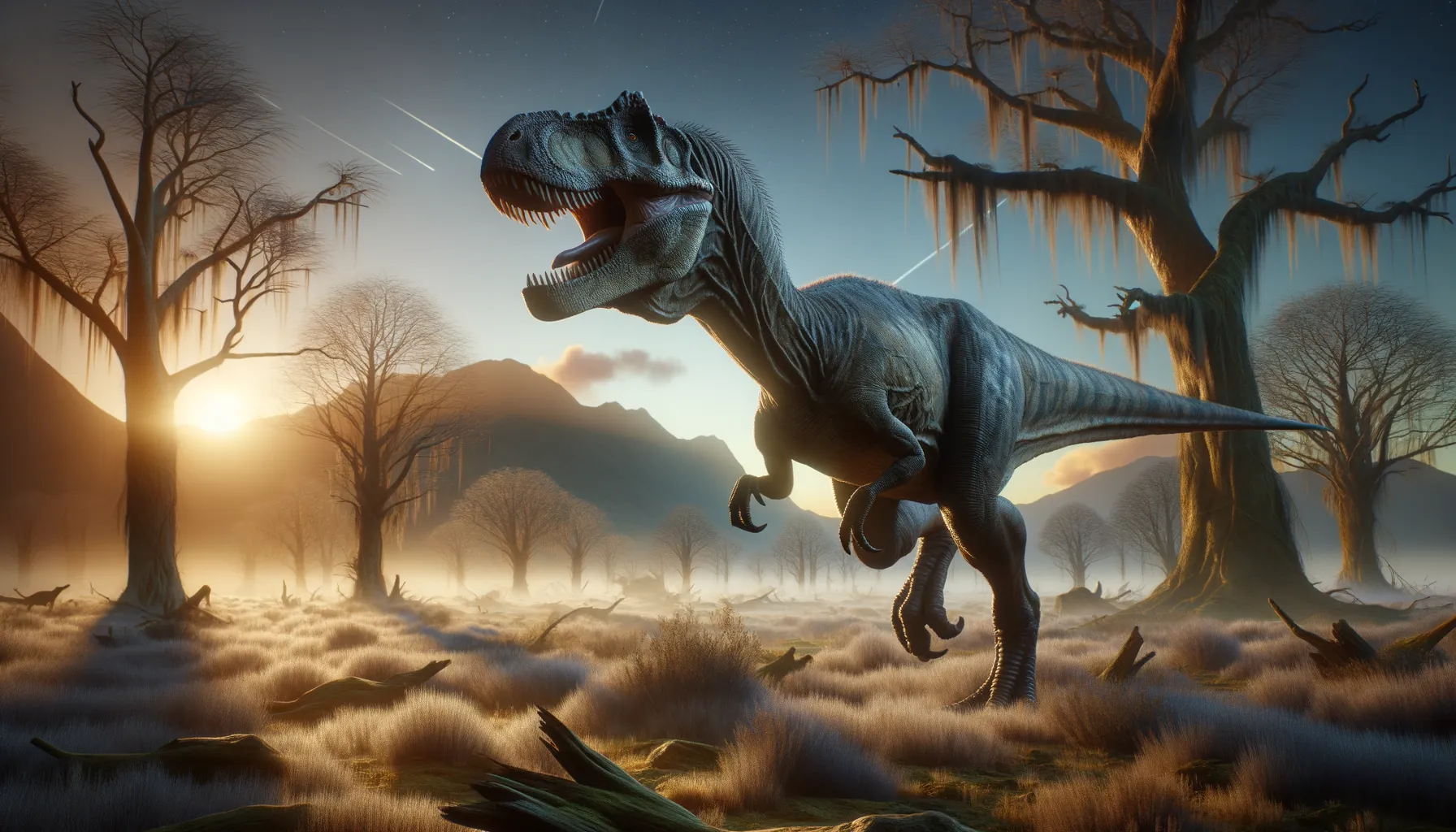
Dianchungosaurus
Unraveling ancient mysteries piece by piece.
Period
Jurassic
Length
Estimated to be similar to small theropods.
Height
No precise measurements available.
Weight
Poorly known; possibly similar to small theropods.
Dianchungosaurus is a poorly understood dinosaur from the Jurassic period, known from only limited fossil fragments discovered in China. Due to the scant evidence, much of its biology, including its exact size and behavior, remains a mystery. It's believed to be a theropod, which is a group that includes all the predecessors of today's birds, suggesting it might have had a lively demeanor and predatory instincts.
Diet
Given its theropod classification, it is presumed to be carnivorous. It likely preyed on small animals or scavenged for food. The exact nature of its diet remains speculative due to limited fossil remains.
Hunting
Presumed to be a predator, it might have ambushed prey due to its presumed smaller size. It could also have scavenged, utilizing its environments such as forests or plain areas for finding food.
Environmental challenges
During the Jurassic period, Dianchungosaurus would have faced various environmental challenges, including climatic changes that could alter its habitat. Like many theropods, competition for food might have been a constant challenge. Coping with frequent environmental shifts would require adaptability. Predation from larger dinosaurs could have posed significant threats, urging them to develop better survival strategies.
Speed
Unknown due to limited fossil evidence.
Lifespan
Not well-documented; estimated similar to reptiles.
First discovery
First discovered in China during the 1970s.
Fun Facts
- Dianchungosaurus was named after the Dianchi Lake in Yunnan, China, where its fossils were first discovered.
- This dinosaur is believed to have lived during the Middle Jurassic period, around 174 to 164 million years ago.
- Dianchungosaurus is thought to have been a herbivore, meaning it likely fed on plants.
- The size of Dianchungosaurus was relatively small compared to some other dinosaurs from its time.
- This dinosaur is known for having unique teeth that resemble those of plant-eating lizards.
- Dianchungosaurus fossils have provided important insights into the early development of herbivorous dinosaur groups.
Growth and Development
Without a complete juvenile fossil record, assessing its growth pattern is challenging. Like other theropods, it likely had a rapid growth spurt during adolescence. Adult forms developed characteristics suited for hunting or scavenging. The shift from juvenile to adult would involve changes in diet and habitat.
Habitat
Dianchungosaurus likely lived in what is now China, inhabiting lush landscapes during the Jurassic. The environment was probably filled with diverse plant and animal life. It might have roamed forested areas or open plains, both offering different survival advantages. Seasonal changes in climate might have influenced its migration and habitation patterns.
Interaction with other species
It likely lived alongside various other dinosaur species with complex ecosystems. Possible competition for food with similar-sized predators might have occurred. It might have been prey to larger carnivores, affecting its behavior and survival strategies. Social dynamics with other dinosaurs remain speculative due to limited data.
Natural lifespan
The natural lifespan is uncertain but might parallel that of similar small theropods.
Reproduction
Dianchungosaurus likely reproduced similarly to other theropods, probably laying eggs. Mating rituals and parental care remain unknown due to insufficient evidence. Nesting sites would reflect species-specific behavior, possibly in secluded areas for protection. Their reproductive patterns might have aligned with climate or resource availability.
Social behaviour
If it was similar to other theropods, it might have exhibited solitary or small group behaviors. Hunting or scavenging could have been either solitary or pack-oriented. Social hierarchies might exist, but evidence is scarce. Seasonal or resource-driven social behavior changes might have occurred.
Fossil locations
Fossils were discovered in China, providing limited but intriguing insights. The discovery of such fragments hints at diverse dinosaur life in the region. Further exploration might reveal more about its life and interactions. These findings remain crucial for expanding our understanding of the Jurassic ecosystem.
